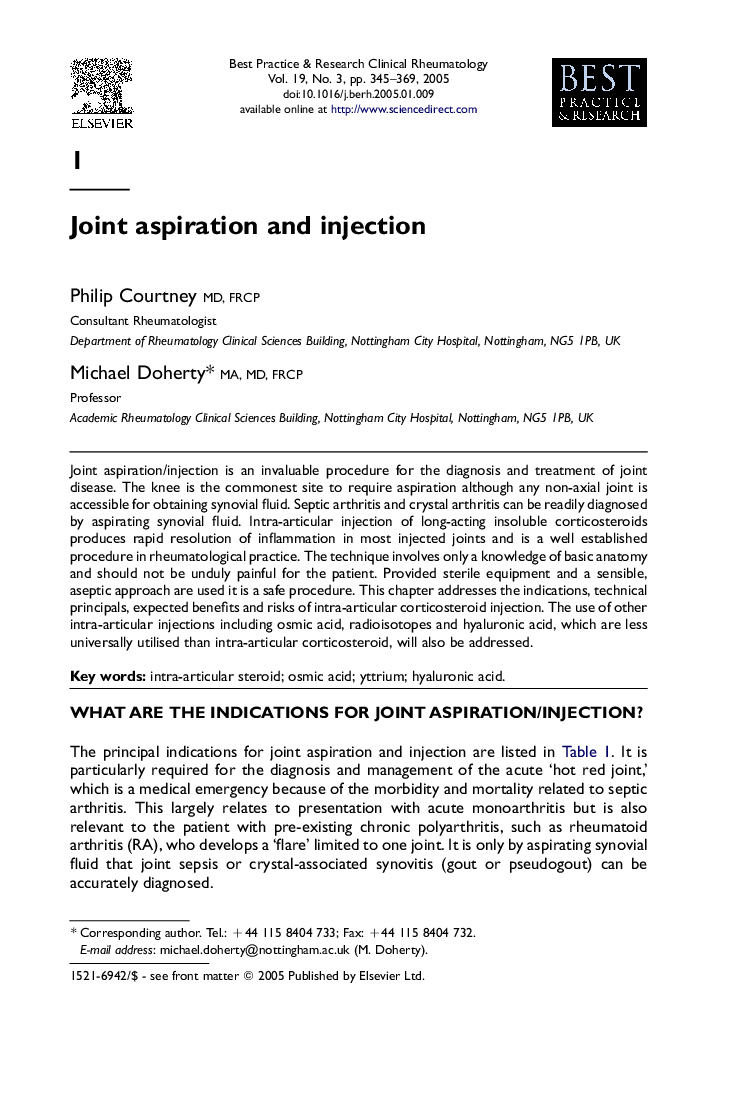| Article ID | Journal | Published Year | Pages | File Type |
|---|---|---|---|---|
| 9261870 | Best Practice & Research Clinical Rheumatology | 2005 | 25 Pages |
Abstract
Joint aspiration/injection is an invaluable procedure for the diagnosis and treatment of joint disease. The knee is the commonest site to require aspiration although any non-axial joint is accessible for obtaining synovial fluid. Septic arthritis and crystal arthritis can be readily diagnosed by aspirating synovial fluid. Intra-articular injection of long-acting insoluble corticosteroids produces rapid resolution of inflammation in most injected joints and is a well established procedure in rheumatological practice. The technique involves only a knowledge of basic anatomy and should not be unduly painful for the patient. Provided sterile equipment and a sensible, aseptic approach are used it is a safe procedure. This chapter addresses the indications, technical principals, expected benefits and risks of intra-articular corticosteroid injection. The use of other intra-articular injections including osmic acid, radioisotopes and hyaluronic acid, which are less universally utilised than intra-articular corticosteroid, will also be addressed.
Keywords
Related Topics
Health Sciences
Medicine and Dentistry
Immunology, Allergology and Rheumatology
Authors
Philip (Consultant Rheumatologist), Michael (Professor),
